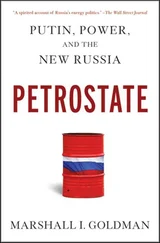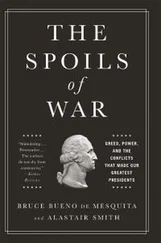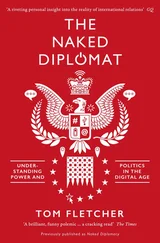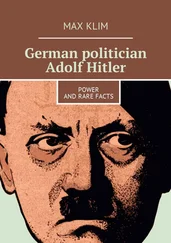*
On March 18, 2008, Sign of Hope sends a letter to the operator of the refinery in Thar Jath. The letter requests the operator to make a statement presenting its position on the results of the tests. This operator is the White Nile Petroleum Operating Company Ltd. (WNPOC). This consortium is based in Khartoum. Some 67.875% of its shares are held by Petronas Caligari Overseas, a subsidiary of Petronas, a company owned by the government of Malaysia; with 24.125% being owned by the India-based Oil and Natural Gas Corporation (ONGC) Videsh Ltd.; and 8% by Sudapet (Sudan National Petroleum Corporation), the Southern Sudan state oil company.53 Petronas’ holding of two thirds of the consortium’s equity arose from its acquisition in 2003 of the shares held by Lundin, a Swedish company.54 Petronas is the most important partner of the government of Sudan in the area of oil production and processing. This applies to all areas of licensing. The company is thus the most influential stakeholder in oil in Sudan.55
Sign of Hope’s letter courteously requests the operators to comment upon the results of the collection of samples of water, and to elucidate how the wastes arising in the production process are disposed of. The operators are also called upon to detail the measures they plan to institute to provide the residents of Rier with safe water. The operators do not respond.
*
On March 28 th, in response to urgings by Spain and Germany, the Human Rights Council of the United Nations publishes a resolution calling for the integration of the rights to have safe drinking water and proper sanitary facilities into the catalog of human rights. The resolution is in response to a report issued by the UN High Commissioner. It states that more than a billion people in the world have been denied access to safe water, and that 2.6 billion people have to endure not having sanitary facilities. The UN High Commissioner has issued an urgent call for the recognition of the right to have clean water as a human right.
An independent expert panel was commissioned to compile a listing of the best practices employed in the procurement of safe and clean water and the arrangement of sanitary facilities. The commission was for three years. It comprised the pursuing of a dialogue with all political and societal stakeholders, with these to include national governments, the UN, and academic institutions and NGOs—and, in this case, especially on-site ones.
Experts on water have been fighting for decades for the recognition of the human right to clean water. These experts view the resolution as constituting an important step towards the achievement of this right.56 The outcome of the process of identification of rights—now that it has finally been instituted—is to be a legally enforceable right to clean water for each person on this planet.
*
Sign of Hope commissions in July, 2008, Hella Rüskamp, a hydro-geologist, with the conducting of a study on the causes of the contamination of drinking water in the Thar Jath and Mala regions of oil prospecting. The objective of the study is to document or refute the possible connection between the activities of companies that are prospecting for oil (test drilling, treatment and disposal of produced water) and the contamination of groundwater by primarily salts and heavy metals.
*
Everyone expects the final race of this year’s Grand Prix season, to be held on November 2 ndin Sao Paulo, to produce a world championship for Lewis Hamilton. Hamilton’s car is a McLaren-Mercedes. Hamilton is in fifth place during most of the race. This will suffice to put Hamilton atop the year’s rankings of the drivers in Formula 1, and thus past Felipe Massa, a Brazilian driver who is leading this race in his Ferrari. The race is somewhat boring—until the second to last round, in which it experiences an unexpected development. Rain starts to fall, causing the most of the drivers to change their tires. While this is occurring, Sebastian Vettel, a German driver, guns his Toro Rosso past Hamilton, surprising him in the process. Goodbye, world championship! Hamilton’s best result will now be to rack up the same total points as Massa, who has, however, achieved a greater number of victories this year. This means that Massa is on track to nab the world championship. Hamilton dogs Vettel meter-by-meter, but he doesn’t have any way of re-passing the Vettel, who is an incredibly strong driver. Is his dream really over? Ferrari’s team in the pits is getting ready to celebrate. One hundred thousand spectators are cheering on their country-person Massa. But then, in what is practically the very last moment of the race, Hamilton and Vettel race past Timo Glock, whose Toyota was in fourth place. Hamilton goes from being sixth to fifth—and thus wins the world championship. He is 23 years old. This makes him the youngest world champion in Formula 1 history. His victory represents the first time since 1999 that a car with a motor manufactured by Mercedes has won the championship.57
*
At Sign of Hope we are working at top speed to prepare a further documentation of the contamination found and of its causes. This documentation is to back up the findings of the previous one. The organization’s research includes monitoring the Internet. It causes us to encounter the Facebook page of a person working for Central Processing Facility (CPF) in Thar Jath. The page shows us that the gigantic facility—which we thought was a refinery—is actually a plant processing crude oil. At it, the crude is separated from the produced water and sands. The crude is then pumped down a pipeline to refineries in the north, at which it is further processed. An evaluation of the satellite photographs reveals that there are some 70 oil wells in the oil field. They feed the oil to the CPF. This does not include abandoned drill holes, next to which are also to be found pits containing the hazardous drilling fluids.
Sign of Hope has a discussion with one of Hella Rüskamp’s staff members. The staff member and Klaus Stieglitz have to travel to Thar Jath as soon as possible. The samples have to be gathered this time by an expert, so as to preclude the arising of any doubts as to the conclusive nature of the samples of water. The forms to be used for the logging of the collection of samples are thoroughly and precisely prepared. We use the GPS data on the sites of the samples made in February to decide where we want to gather them this time. Our approach is to take samples from other wells yielding potable water, from swamps and from sites containing produced water. All of these are to be in or near to the CPF. We also start looking for the waste pits that a worker in the oil fields had described to us in February.
We land on November 12 thon a bumpy bush runway in Southern Sudan. Accompanying us on this trip is a correspondent of the “Deutsche Presse Agentur” (“dpa”) news agency. Our area of investigation starts north of the city of Leer and extends some 75 kilometers northwards from there. The White Nile forms the eastern geographic and hydrological border of our area. The first sample will be taken some 55 kilometers from the Nile. Scheduled is the taking of samples from a total of 12 wells, and, as well, the gathering of seven samples of surface waters. Of these, it is to be assumed that they might contain residual contaminants. Four of these surface waters are located in the immediate vicinity of the Central Processing Facility (CPF) of Thar Jath.58 In the case of several wells, the complaints voiced by local residents as to the water occasioned our taking of samples. The hand-operated pumps are also subjected to an appraisal. This reveals that they were all of a kind common in India, that they are all sealed against permeation from outside, and that they all have been placed in a concrete base. A direct contamination from the surface of the well itself is thus to be excluded. The results show that the level of salt found in the wells markedly increases as you move from east to west.
Читать дальше












